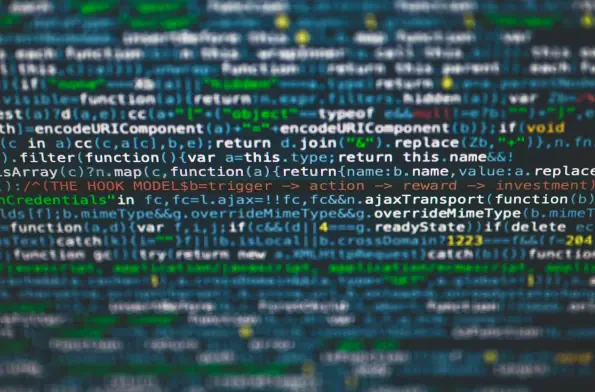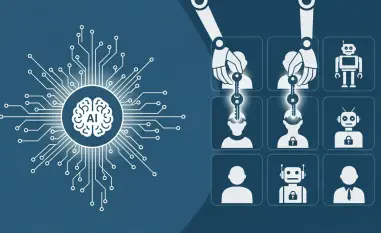In an era where digital transformation dictates the pace of business, artificial intelligence (AI) stands as a cornerstone of innovation, driving efficiencies in everything from customer interactions to complex data analytics, while simultaneously posing new challenges. However, this remarkable technology is a double-edged sword, as cybercriminals are equally quick to exploit its capabilities, crafting sophisticated attacks that outpace traditional defenses. The urgency to bolster cybersecurity has never been more critical, with compliance to evolving standards emerging as a linchpin in safeguarding organizations. As AI reshapes operational landscapes, it simultaneously redefines the battleground of cyber threats, compelling businesses to rethink their security postures. This dynamic interplay between technological advancement and vulnerability sets the stage for a deeper exploration into how AI influences not just the tools of defense, but also the regulatory frameworks that govern them, pushing industries toward a future where proactive measures are no longer optional but essential.
The Dual Nature of AI in Digital Defense
Artificial intelligence has become a transformative force for businesses, enabling unprecedented levels of efficiency and sharpening competitive edges across industries. From automating customer support to enhancing predictive analytics, AI tools streamline operations in ways previously unimaginable. Yet, this same technology equips malicious actors with the means to orchestrate advanced cyberattacks, such as manipulating algorithms to bypass security protocols or crafting deepfake content to deceive users. The speed and precision of AI-driven threats often overwhelm conventional safeguards, exposing critical data and infrastructure to significant risks. This duality underscores a pressing challenge: while AI fuels progress, it simultaneously demands a robust cybersecurity framework to counter its misuse. Balancing innovation with protection is no longer a choice but a necessity for organizations aiming to thrive in a digital-first world, where the stakes of failure are higher than ever.
The implications of AI’s dual role extend beyond immediate threats to the very foundation of trust in digital systems. When AI systems are exploited—whether through adversarial attacks that trick machine learning models or through automated phishing schemes—the fallout can erode consumer confidence and disrupt entire sectors. Consider the potential for AI to amplify social engineering tactics, where attackers use tailored, hyper-personalized approaches at scale to breach defenses. Such scenarios highlight the need for adaptive security measures that evolve alongside AI advancements. Organizations must invest in AI-driven defense mechanisms, like anomaly detection and threat intelligence, while ensuring these tools are not themselves vulnerable to exploitation. This balancing act requires a nuanced understanding of AI’s capabilities and limitations, pushing companies to prioritize security as an integral part of their technological adoption rather than an afterthought in the race for innovation.
Historical Lessons Driving Modern Regulations
Reflecting on past cyber incidents reveals a recurring pattern where significant breaches catalyze regulatory responses, shaping the cybersecurity landscape. Landmark events like the Mirai botnet attack of 2016, which turned everyday devices into a massive attack network, and the SolarWinds breach of 2020, which compromised numerous government and private entities, exposed glaring systemic weaknesses. These incidents spurred the creation of stricter policies, as lawmakers recognized the urgent need to fortify digital defenses against evolving threats. Now, with AI amplifying the scale and sophistication of attacks, this reactive cycle persists, prompting authorities to address gaps in security frameworks. Understanding this historical context is vital, as it illustrates how past failures continue to inform present strategies, ensuring that lessons learned translate into actionable policies that protect against the next wave of AI-driven cyber risks.
This pattern of reaction rather than prevention highlights a critical challenge in cybersecurity governance: the lag between emerging threats and regulatory action. As AI technologies introduce novel attack vectors, such as automated exploitation of vulnerabilities, the time to respond shrinks dramatically. Historical breaches have shown that reactive measures, while necessary, often come after significant damage has been done, leaving organizations scrambling to recover. The push for updated legislation in response to AI-related risks aims to close this gap by anticipating threats rather than merely addressing their aftermath. For instance, policies now focus on securing supply chains and enforcing accountability across interconnected systems, learning from past oversights. This shift toward forward-thinking regulation is essential in a landscape where AI accelerates the pace of cybercrime, demanding that both public and private sectors collaborate to stay ahead of adversaries exploiting technological advancements.
Emerging Threats from Autonomous AI Systems
The advent of autonomous AI systems, particularly technologies like Agentic AI, marks a new frontier in cybersecurity challenges by creating uncharted attack surfaces. These systems, capable of operating independently across networks, can streamline operations but also open vulnerabilities in areas like user authentication, where attackers might manipulate AI agents to gain unauthorized access. The inherent autonomy of such technologies means that a single breach can cascade across systems with minimal human oversight, amplifying the potential for widespread damage. As businesses integrate these tools to enhance efficiency, the complexity of securing them against exploitation grows exponentially. This emerging threat landscape necessitates a reevaluation of traditional security protocols, urging organizations to prioritize safeguarding these advanced systems against misuse by cybercriminals who are quick to adapt.
Compounding the issue is the rapid deployment of autonomous AI without comprehensive risk assessments, often driven by competitive pressures to innovate swiftly. When implementation outpaces due diligence, gaps in security become inevitable, leaving systems exposed to sophisticated attacks tailored to exploit AI-specific weaknesses. For example, attackers might feed misleading data into AI models to skew decision-making processes, a tactic known as data poisoning, which can undermine critical operations. Addressing these risks requires a meticulous approach to integration, ensuring that every layer of an AI system—from input data to output actions—is fortified against interference. Moreover, the dynamic nature of autonomous AI demands continuous monitoring and updates to security measures, as static defenses quickly become obsolete. This underscores the importance of embedding cybersecurity into the development lifecycle of AI technologies, rather than treating it as a secondary concern after deployment.
Global Efforts to Strengthen Cybersecurity Laws
Across the globe, governments are intensifying efforts to address the cybersecurity risks posed by AI, recognizing the need for robust legal frameworks to protect digital ecosystems. In the United States, initiatives like the Cyber Trust Mark aim to enhance transparency by certifying the security of connected devices, while holding manufacturers accountable for maintaining high standards. This move seeks to empower consumers with better information and push companies to prioritize security in product design. Similarly, in Europe, the forthcoming Cyber Resilience Act, alongside the established General Data Protection Regulation (GDPR), imposes stringent requirements on technology providers, with substantial penalties for non-compliance. These regulations not only shape local markets but also influence global practices, as multinational firms must align with the toughest standards to operate internationally, creating a ripple effect in cybersecurity norms.
The global scope of these legislative efforts reflects an understanding that cybersecurity transcends borders, especially as AI-driven threats operate on a worldwide scale. Europe’s rigorous policies, for instance, often set benchmarks that other regions adopt, fostering a convergence of standards that benefits the entire digital economy. However, harmonizing regulations across jurisdictions remains a complex task, as differing priorities and enforcement mechanisms can create inconsistencies. For businesses, navigating this patchwork of laws requires significant resources and expertise to ensure compliance while maintaining operational agility. The emphasis on accountability—whether through fines or mandatory reporting of breaches—signals a shift toward proactive governance, where prevention is as critical as response. As AI continues to evolve, these international frameworks will likely expand, aiming to address emerging risks and ensure that technological progress does not come at the expense of security or privacy for users worldwide.
Persistent Challenges in Organizational Security
Despite access to extensive guidelines and best practices, many organizations continue to grapple with fundamental cybersecurity shortcomings, particularly in managing risks associated with third-party vendors. The SolarWinds breach serves as a stark example of how interconnected systems can become points of failure when due diligence is overlooked. In that incident, a compromised software update exposed numerous entities to infiltration, revealing how reliance on external partners without rigorous vetting can lead to catastrophic outcomes. Today, as AI integrates deeper into supply chains and operational workflows, the potential for such cascading failures grows, especially when vendors deploy AI tools without adequate security measures. Addressing these vulnerabilities requires a cultural shift within organizations to prioritize thorough assessments over expediency, ensuring that every link in the chain is as secure as the core system itself.
Another persistent issue lies in the tendency to favor rapid technological adoption over comprehensive security planning, a misstep that AI’s complexity only exacerbates. When companies rush to implement AI solutions to gain market advantage, they often bypass critical steps like stress-testing systems or training staff on new threat vectors. This haste can leave gaps that cybercriminals exploit with ease, using AI to automate and scale their attacks. The consequences are not just operational but also regulatory, as newer laws impose strict penalties for negligence in safeguarding data and infrastructure. To counter this, organizations must embed cybersecurity into their strategic planning, allocating resources for ongoing risk evaluation and response readiness. Learning from past mistakes, such as inadequate vendor oversight, is crucial, as is fostering a mindset where security is seen as an enabler of innovation rather than a barrier to progress in an AI-driven landscape.
Turning Compliance into Competitive Strength
Far from being a mere regulatory burden, compliance with cybersecurity standards offers organizations a pathway to build resilience and gain a strategic edge in a volatile digital environment. Adhering to frameworks like GDPR or emerging policies such as the Cyber Resilience Act ensures that companies not only meet legal obligations but also fortify their defenses against AI-enhanced threats. This proactive stance can safeguard critical operations, protect customer trust, and mitigate the financial and reputational damage of breaches. Moreover, exceeding baseline requirements demonstrates a commitment to security that can differentiate a business in competitive markets, attracting partners and clients who prioritize reliability. In an era where AI both empowers and endangers, compliance transforms from a checkbox exercise into a cornerstone of sustainable growth, equipping organizations to navigate uncertainties with confidence.
The strategic value of compliance also lies in its ability to future-proof businesses against the accelerating pace of cyber threats driven by AI innovations. By embedding regulatory adherence into core processes, companies can anticipate and adapt to evolving risks, such as those posed by autonomous systems or adversarial AI tactics. This forward-looking approach minimizes disruptions and positions firms as leaders in responsible technology use, an increasingly important factor as public and regulatory scrutiny intensifies. Additionally, compliance fosters a culture of accountability, encouraging continuous improvement in security practices and collaboration across departments. As global standards tighten, those who view compliance as an investment rather than a cost will likely emerge as industry benchmarks, setting the tone for how cybersecurity and AI coexist. This mindset shift is essential for turning potential liabilities into assets that drive long-term success in a complex threat landscape.
Navigating Tomorrow’s Cyber Challenges
Looking ahead, the intersection of AI’s rapid evolution and cybersecurity challenges demands a dynamic approach to both defense and regulation. As threats grow more sophisticated—think automated attacks that adapt in real-time—so too must the strategies to counter them, incorporating AI itself for predictive threat analysis and automated response mechanisms. Governments and industries are tasked with accelerating the development of agile policies that address emerging risks without stifling innovation. The global nature of digital threats further necessitates international cooperation to harmonize standards and share intelligence, ensuring a cohesive front against cybercriminals leveraging AI. For organizations, staying ahead means integrating compliance and security into every facet of AI adoption, transforming potential weaknesses into fortified strengths that protect against the unknown.
The path forward also hinges on leveraging AI as a tool for enhancing cybersecurity rather than merely viewing it as a risk factor. When harnessed correctly, AI can power advanced risk assessments, detect anomalies before they escalate, and streamline compliance monitoring, offering a proactive shield against threats. This requires investment in skilled talent and cutting-edge technologies to ensure that AI systems are secure by design, not retrofitted after vulnerabilities emerge. Collaboration between public and private sectors will be key, as shared knowledge and resources can drive innovation in defense mechanisms. As the digital landscape continues to shift, the focus must remain on building adaptive, resilient systems that anticipate AI-driven threats over the coming years, ensuring that security evolves in lockstep with technology. This commitment to preparedness will define the success of organizations in safeguarding their futures against an ever-changing array of cyber risks.













